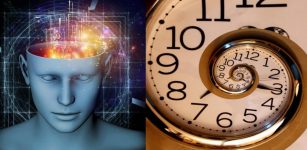New Scientific Approach To People’s Near-Death-Experiences
Eddie Gonzales Jr. – MessageToEagle.com – Do people have the same near-death experiences?
Do some specific aspects of these experiences tend to occur in the same order for different people? Are some near-death experiences unique to some humans? Is there a specific pattern that can help us to establish what happens after death?
 In near-death-experiences, many people report a sense of peacefulness and bright light. Credit: © shaunwilkinson / Fotolia
In near-death-experiences, many people report a sense of peacefulness and bright light. Credit: © shaunwilkinson / Fotolia
This time, researchers from Western University and the University of Liège, Belgium try to answer important questions regarding near-death-experiences by digging dipper into the ways people describe their experiences.
In their written testaments of the great beyond, individuals who had a near-death experience offered positive-toned words like ‘see’ and ‘light’ far more frequently than negative-toned ones like ‘fear’ and ‘dead,’ according to the study.
Unlike previous work, this study utilized text mining and artificial intelligence to provide an objective, unbiased approach to understanding human consciousness following these life-altering encounters that are predominantly studied elsewhere as a subjective, individual phenomenon.
Traditionally, near-death experiences are explored using standardized questionnaires like the Greyson scale, which includes queries like “Did you have a feeling of peace and pleasantness?” or “Did you feel separated from your body?” This is a potentially biased approach, which may skew recollections and subsequent discoveries.
 People who have near-death experiences often recall seeing a white light.
People who have near-death experiences often recall seeing a white light.
“There is no bias with text mining, which is contrary to behavioral studies like Greyson scaling when individuals are asked specific questions,” Physics and Astronomy professor Andrea Soddu, who collaborated with Belgian neurologist Steven Laureys and colleagues at Western and ULiège, said in a press release.
“Text mining is completely unbiased. It is fully automatic and we, as researchers, don’t make any assumptions.”
See also:
Afterlife Is Real – Neurosurgeon Says He Has Proof Of Heaven And Advanced Higher Life-Forms
Death Is Just An Illusion: We Continue To Live In A Parallel Universe
Do All People Have Same Near-Death-Experiences?
In this study, researchers investigated 158 participants by analyzing first-person, text narratives shared by the individuals following their near-death experiences. This text mining model allows for an unbiased evaluation and also provides valuable and measurable data like frequency and correlation of keywords like ‘see,’ ‘light,’ ‘dead’ and ‘fear.’
Once the data was retrieved, the neuroscientists developed visual representations of the findings like graphs and dendrograms to illustrate the proximity of specific words as they relate to positive and negative connotations towards near-death experiences.
Western graduate student Demetrius Ribeiro De Paula, co-first author of the study with Vanessa Charland from ULiège, says this text mining approach will only increase its validity as more and more narratives are collected.
“In the future, when there will be a huge volume of these text narratives, it will be much easier to handle the data using text mining as opposed to the questionnaire approach,” De Paula said.
Written by Eddie Gonzales Jr. – MessageToEagle.com Staff










